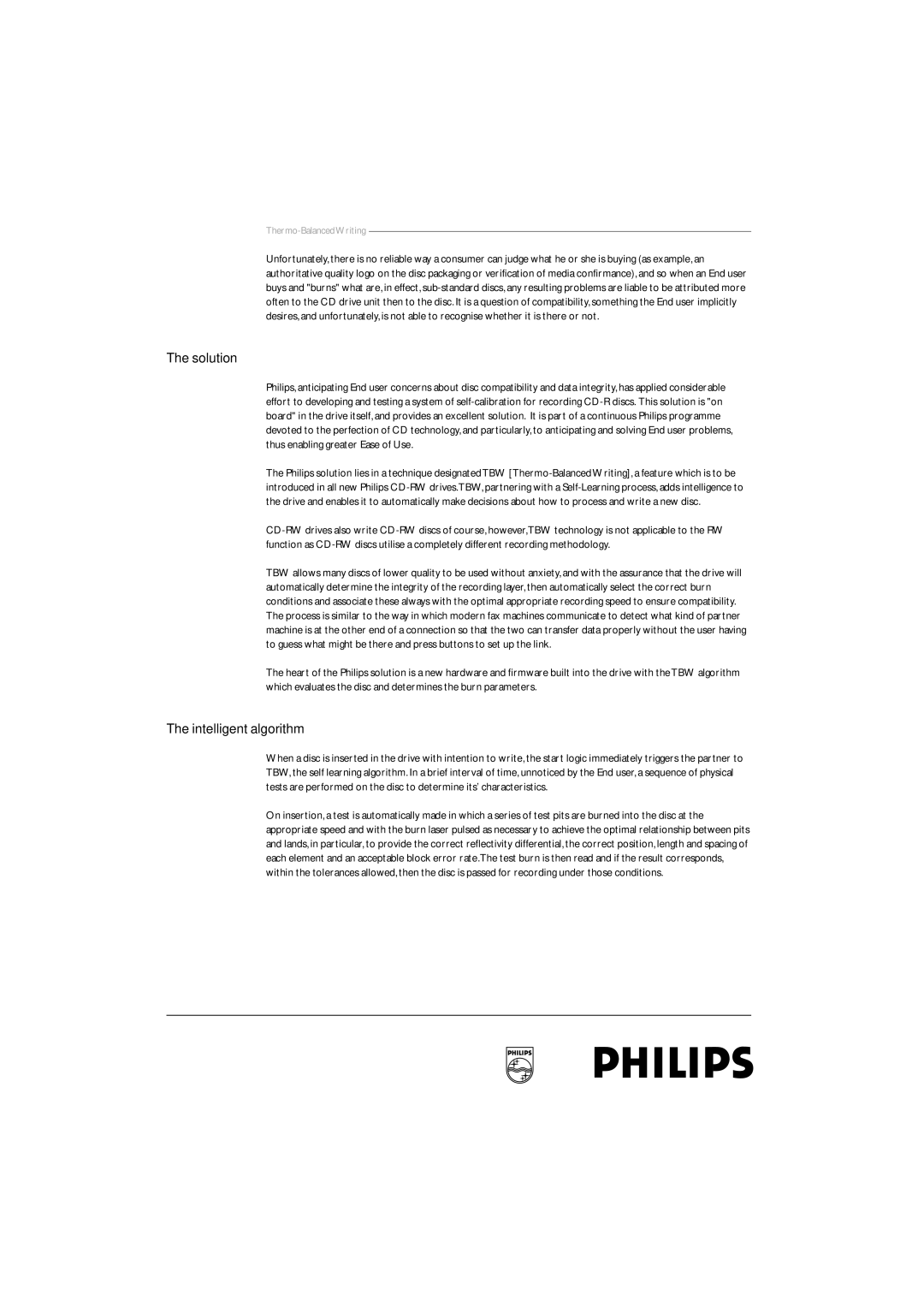
Unfortunately, there is no reliable way a consumer can judge what he or she is buying (as example, an authoritative quality logo on the disc packaging or verification of media confirmance), and so when an End user buys and "burns" what are, in effect,
The solution
Philips, anticipating End user concerns about disc compatibility and data integrity, has applied considerable effort to developing and testing a system of
The Philips solution lies in a technique designated TBW
TBW allows many discs of lower quality to be used without anxiety, and with the assurance that the drive will automatically determine the integrity of the recording layer, then automatically select the correct burn conditions and associate these always with the optimal appropriate recording speed to ensure compatibility. The process is similar to the way in which modern fax machines communicate to detect what kind of partner machine is at the other end of a connection so that the two can transfer data properly without the user having to guess what might be there and press buttons to set up the link.
The heart of the Philips solution is a new hardware and firmware built into the drive with the TBW algorithm which evaluates the disc and determines the burn parameters.
The intelligent algorithm
When a disc is inserted in the drive with intention to write, the start logic immediately triggers the partner to TBW, the self learning algorithm. In a brief interval of time, unnoticed by the End user, a sequence of physical tests are performed on the disc to determine its’ characteristics.
On insertion, a test is automatically made in which a series of test pits are burned into the disc at the appropriate speed and with the burn laser pulsed as necessary to achieve the optimal relationship between pits and lands, in particular, to provide the correct reflectivity differential, the correct position, length and spacing of each element and an acceptable block error rate.The test burn is then read and if the result corresponds, within the tolerances allowed, then the disc is passed for recording under those conditions.
